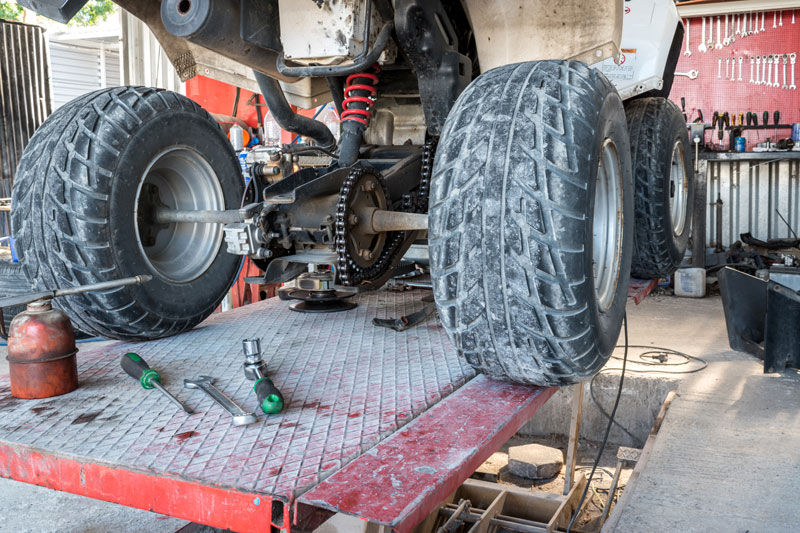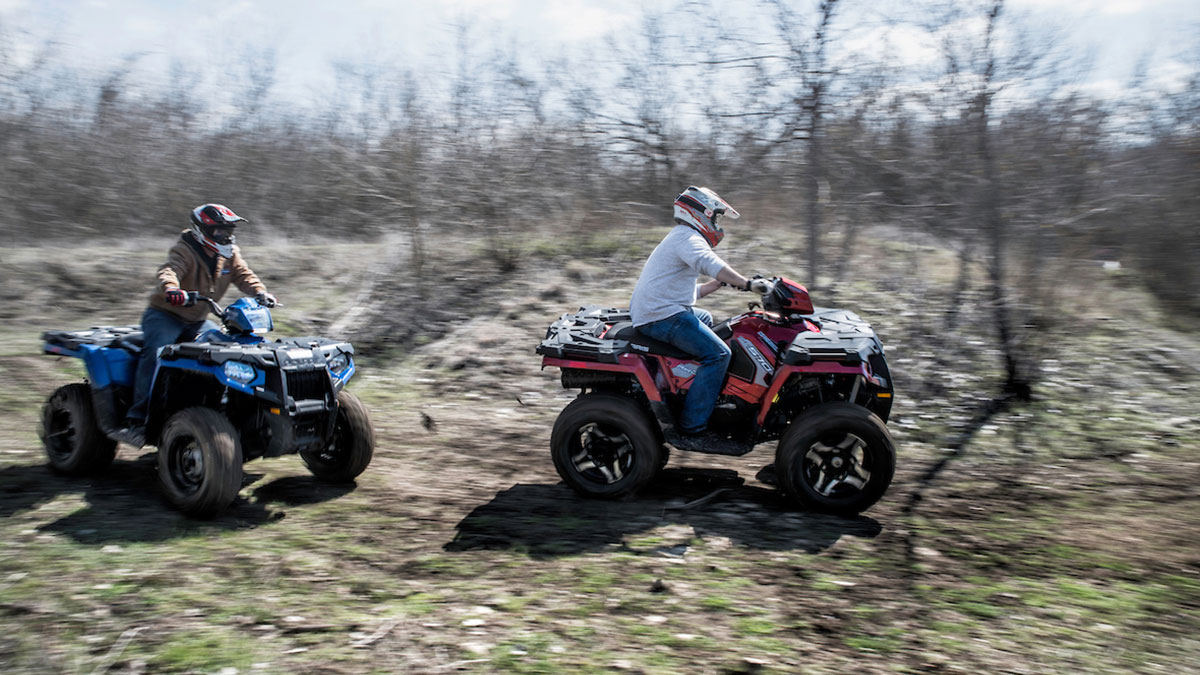ATV Riding Methods: Mastering the Art of Off-Roading

Body Positioning
To properly navigate via difficult off-road surface, it is important for ATV riders to continually maintain correct body positioning. Keeping the appropriate body placement while riding an ATV not only boosts control and stability yet likewise guarantees the rider's security. By adopting the right body positioning methods, riders can successfully distribute their weight, boost their balance, and reduce the threat of accidents or injuries.
Putting the feet on the foot secures enables the biker to preserve stability and control over the ATV. The rider's knees should be slightly curved, giving a mild suspension to keep and absorb shocks balance.
Furthermore, the rider's eyes should constantly be concentrated in advance, checking the surface and anticipating any kind of barriers or adjustments in the route. By maintaining an onward stare, cyclists can make instant decisions and react appropriately to testing terrain.
Throttle Control
Building upon the importance of correct body placing for ATV riders, understanding throttle control is an essential skill that allows motorcyclists to effectively navigate through various off-road surfaces. Strangle control refers to the capability to control the amount of power provided to the ATV's engine. By comprehending exactly how to control the throttle, motorcyclists can make certain a controlled and smooth velocity, enabling them to browse challenges with accuracy.
Sudden or jerky motions can create the ATV to lose grip or become unsteady, making it difficult to maintain control. This method permits the ATV to preserve a consistent speed and offers far better grip, reducing the risk of mishaps.
Along with smooth inflection, bikers need to also learn just how to stabilize the throttle with various other riding strategies, such as body positioning and stopping. When climbing up high hillsides, cyclists require to use sufficient throttle to preserve momentum without triggering or overpowering the atv wheel spin. When descending steep slopes, cyclists need to make use of the throttle in combination with proper body stopping and positioning to preserve control and protect against the ATV from sliding or tipping over.

Braking Methods
An important element of ATV riding strategies is mastering efficient stopping techniques. Understanding just how to brake effectively can make a significant difference in your safety and control over the car when it comes to off-roading. One of one of the most critical stopping strategies is making use of the front brake greater than the back brake. The front brake provides the majority of the stopping power, so it is crucial to use it sensibly. However, it is essential to keep in mind that extreme stopping with just the front brake can create the ATV to pitch ahead, possibly bring about loss of control or perhaps turning over. It is recommended to use additional reading both brakes simultaneously, however with more pressure on the front brake. Another essential technique is to avoid securing the wheels while stopping. Securing the wheels can result in skidding, making it tough to keep control. To avoid this, squeeze the brake levers slowly and launch them somewhat if you really feel the wheels securing. By grasping these braking techniques, you can enhance your ATV riding skills and ensure a secure and delightful off-roading experience.
Cornering Strategies
One crucial aspect of grasping ATV riding strategies is recognizing reliable cornering techniques. Collaring on an ATV can be visit here challenging, however with the appropriate methods, cyclists can navigate turns safely and successfully. The key to successful cornering is to keep control of the ATV while optimizing grip and reducing the danger of toppling.
To execute an appropriate cornering strategy, riders ought to come close to the turn at an ideal speed, guaranteeing they are not going also slow or too quick. It is vital to change the body weight towards the inside of the turn, leaning into it to preserve balance and security. This aids for the centrifugal pressure and maintains the ATV upright.
Additionally, bikers ought to maintain their eyes concentrated on the departure factor of the turn instead than the prompt course in advance (ATV). This permits smoother and more accurate steering, as it assists the motorcyclist expect any kind of barriers or adjustments in surface
In addition, correct throttle control plays a substantial role in cornering. Cyclists must modulate the throttle smoothly, avoiding sudden accelerations or slowdowns, which can create loss of control.
Uphill and Downhill Riding
When browsing off-road surface, ATV motorcyclists need to grasp the methods for uphill and downhill riding to preserve control and make sure safety. Uphill riding requires a mix of equilibrium, throttle control, and weight circulation. As motorcyclists ascend steep slopes, they need to lean forward to change their weight towards the front of the ATV, which boosts traction on the front wheels and avoids the car from flipping backward. ATV. Additionally, keeping a constant throttle and preventing sudden velocity or slowdown helps to stop Visit This Link the ATV from shedding momentum or obtaining stuck. Downhill riding, on the various other hand, requires riders to lean back and change their weight towards the back of the ATV. This aids to preserve stability and protect against the automobile from flipping forward. It is essential to use the brakes moderately and use them slowly to avoid securing the wheels and losing control. Additionally, cyclists need to select the path with the least barriers, as browsing downhill can be much more challenging as a result of the boosted speed and lowered traction. By understanding the methods for uphill and downhill riding, ATV bikers can with confidence tackle numerous off-road terrains and enjoy a exciting and safe experience.
Conclusion
To conclude, understanding the art of ATV riding calls for a combination of body positioning, throttle control, braking techniques, and efficient cornering. Uphill and downhill riding likewise need certain abilities to browse securely. By applying these strategies, cyclists can boost their off-roading experience and boost their total control and safety on the ATV.
ATV Riding Techniques: Understanding the Art of Off-Roading is a comprehensive guide that digs into the complexities of grasping the skills required for off-road ATV riding. Whether you are a beginner or an experienced rider, ATV Riding Techniques: Mastering the Art of Off-Roading uses essential recommendations to aid boost your off-road ATV riding skills to the next level.
